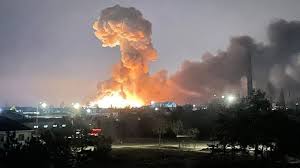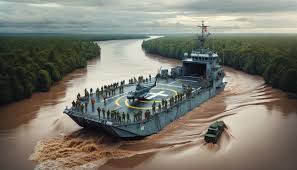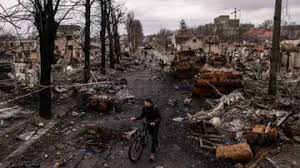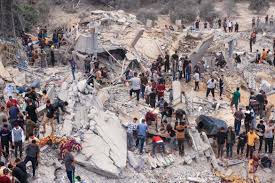The Impact on Water, Soil, and Biodiversity.

Wars have long been recognized for their devastating social and economic consequences, but their impact on the environment is often overlooked. Armed conflicts can inflict severe and lasting damage on ecosystems, affecting water quality, soil health, and biodiversity. This article explores how wars contribute to environmental degradation, the long-term consequences of this damage, and potential solutions to mitigate these effects.
Understanding the Environmental Impact of Wars
The relationship between warfare and environmental destruction is multifaceted, involving direct and indirect consequences. While the immediate focus of wars is often on human casualties and infrastructure damage, the harm to natural resources is equally critical, affecting both local and global ecosystems.
How Wars Affect Natural Resources
Armed conflicts disrupt the delicate balance of ecosystems through:
- Destruction of Infrastructure: The bombing of facilities such as dams, oil refineries, and water treatment plants releases pollutants into the environment.
- Deforestation and Land Degradation: Forests are often cleared to build military bases or as a tactic to expose enemies.
- Chemical Contamination: The use of chemical weapons, explosives, and herbicides contaminates soil and water sources.

Water Scarcity and Pollution
How Wars Damage the Environment: Impact on Water, Soil, and Biodiversity
Water scarcity and pollution are often exacerbated during times of war, as conflicts disrupt critical infrastructure and access to clean water sources. Destruction of water treatment facilities, contamination of rivers and aquifers, and the diversion of water supplies for military purposes leave communities vulnerable to severe shortages. Additionally, pollutants such as chemicals, fuel, and debris from military activities can contaminate freshwater resources, making them unsafe for consumption or agriculture. The effects are particularly devastating in conflict zones where civilian populations already face limited resources, leading to increased risks of disease outbreaks and long-term environmental damage. Addressing water scarcity and pollution in war-torn areas requires urgent humanitarian intervention, restoration of infrastructure, and adherence to international laws protecting water as a critical resource.
Case Study – Water Contamination in Vietnam
During the Vietnam War, the widespread use of Agent Orange led to severe contamination of water sources. This herbicide caused long-term ecological damage, affecting both biodiversity and the health of local populations who relied on these water resources.

Water as a Weapon of War
Water is one of the most critical resources affected during wars. Infrastructure that provides clean water is often targeted or inadvertently damaged, leaving communities without access to safe drinking water. For instance, the contamination of rivers and aquifers with chemicals and debris can persist for decades, endangering both human and aquatic life.
In some conflicts, controlling or destroying water supplies is used as a military strategy. For example, in Syria, water supply cuts in conflict zones left millions without access to clean water, exacerbating humanitarian crises.
Soil Degradation: A Silent Consequence of Wars
The Impact of Explosives and Chemicals on Soil
The use of heavy weaponry and explosives introduces toxic substances into the soil, reducing its fertility and making it unsafe for agriculture. In addition, remnants like unexploded ordnance pose long-term risks, preventing land rehabilitation.
Chemical Contamination and Agriculture
Herbicides and pesticides used during wars alter the soil’s composition, affecting its ability to support plant growth. This leads to a decline in agricultural productivity, exacerbating food insecurity in conflict-affected regions.
Biodiversity Loss: A Threat to Ecosystems
Habitat Destruction

War
Wars often lead to deforestation, pollution, and the destruction of critical habitats. Wildlife populations suffer, especially endemic and endangered species that are unable to adapt to the sudden changes in their environment.
Case Study – Biodiversity in the Democratic Republic of Congo
Ongoing conflicts in the Congo Basin have led to the widespread poaching of species like elephants and gorillas. These animals are targeted for their valuable parts or because their habitats are destroyed by military activity.
Pollution and Ecosystem Disruption
The release of pollutants during warfare—such as oil spills, bomb residue, and industrial waste—disrupts ecosystems, impacting plants, animals, and entire food chains.
Climate Change and Wars: A Vicious Cycle
Armed conflicts contribute to climate change by increasing greenhouse gas emissions through military activities and infrastructure destruction. Additionally, environmental degradation caused by wars—such as deforestation and habitat loss—exacerbates global warming.
The Feedback Loop
Environmental crises like water scarcity and land degradation can also fuel future conflicts, creating a cycle of instability and ecological harm. For example, disputes over diminishing water resources in war-torn regions have escalated tensions, perpetuating cycles of violence.
Strategies for Mitigating the Environmental Impact of Wars
International Cooperation and Environmental Policies
Global efforts to reduce the environmental impact of conflicts are essential. Organizations like the United Nations can play a pivotal role in enforcing regulations that protect natural resources during wartime.
Establishing Protected Zones
Designating certain areas as off-limits during conflicts can help preserve critical ecosystems and biodiversity.
Post-Conflict Environmental Rehabilitation

Rebuilding after wars should include environmental restoration efforts, such as:
- Cleaning up polluted water sources.
- Removing landmines and unexploded ordnance.
- Restoring forests and agricultural land.
Raising Awareness and Advocacy
Promoting awareness about the environmental impact of wars can drive change. Educating communities, policymakers, and military leaders about sustainable practices can help mitigate future damage.
Conclusion
Wars have far-reaching consequences that extend beyond human suffering and economic loss. The environmental damage they cause—pollution of water, degradation of soil, and destruction of biodiversity—has long-term impacts that can take decades to recover from.
Addressing the environmental impact of wars requires a comprehensive approach that includes international cooperation, sustainable post-conflict rehabilitation, and proactive advocacy. By prioritizing the protection of natural resources, we can ensure that future generations inherit a planet capable of sustaining life, even in the aftermath of conflict.
FAQ
How do wars affect the environment?
Wars impact the environment by destroying infrastructure, polluting water sources, degrading soil, and causing biodiversity loss. These effects can persist for years, damaging ecosystems and local communities.
What are examples of environmental damage caused by wars?
Examples include water contamination during the Vietnam War, deforestation in war zones, and oil spills caused by bombing industrial facilities. These events have long-term ecological and humanitarian consequences.
How can the environmental impact of wars be mitigated?
Mitigation efforts include enforcing international environmental laws, establishing protected zones, rehabilitating ecosystems post-conflict, and raising awareness about sustainable practices during and after wars.
Sourche: youtube – https://youtu.be/YI83U71HrPA?si=8H5MwVtJ-ByUKpuA




Pingback: The Green Economy and the Transition to a Sustainable Future - VarietyWeb
Pingback: The Impact of Plastic on Nature - VarietyWeb